Tea lovers around the world often find themselves puzzled when trying to distinguish between different types of tea. While all true teas come from the same plant – Camellia sinensis – the magic lies in how they’re processed. In this article, we’re diving deep into the fascinating world of tea differentiation, exploring the six main categories that every tea enthusiast should know: white, black, green, yellow, Pu-erh, and oolong.
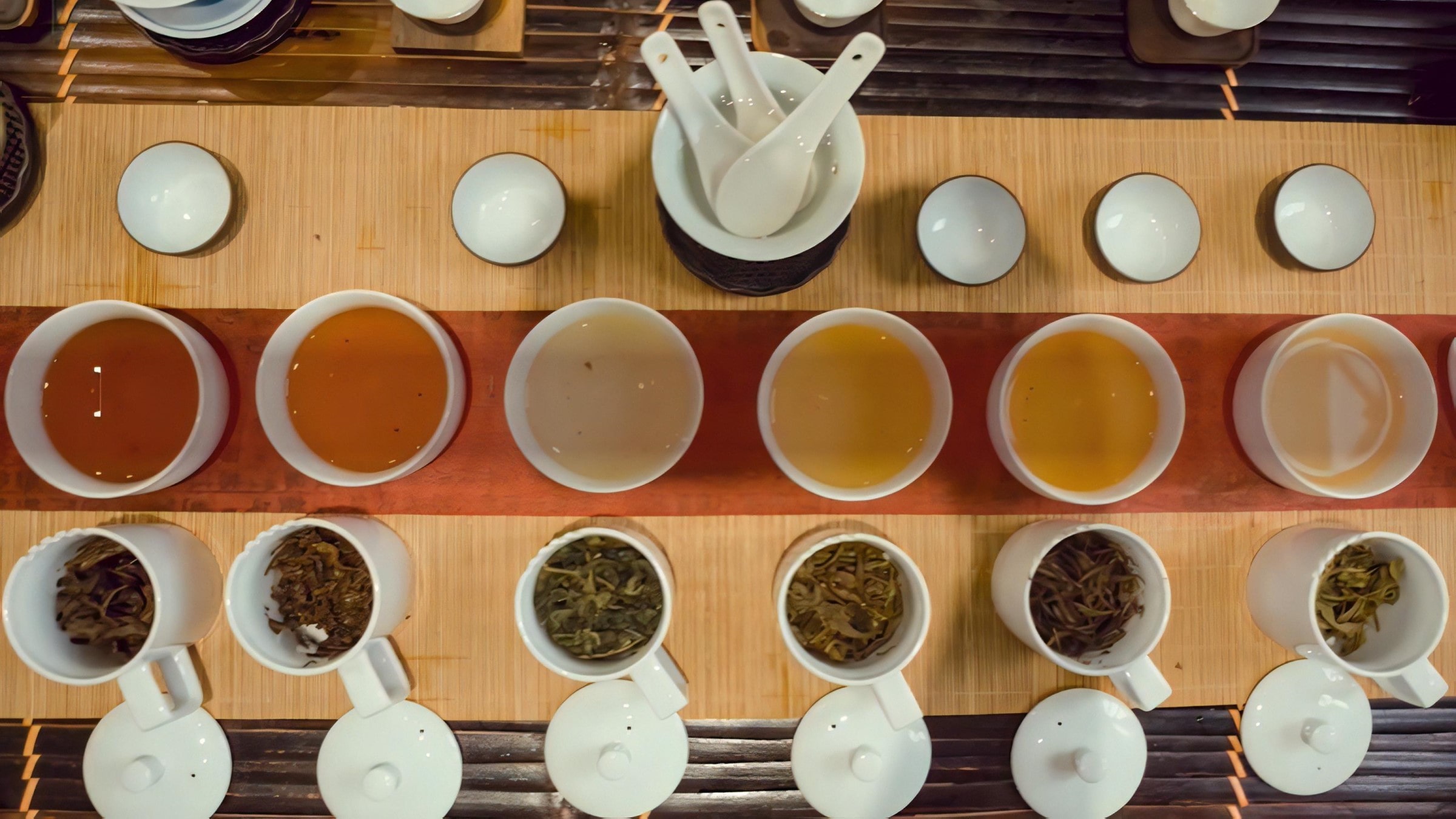
Understanding these distinctions isn’t just about expanding our tea knowledge; it’s about appreciating the artistry and tradition that goes into each cup. Whether you’re a curious beginner or a seasoned tea drinker looking to refine your palate, this comprehensive guide will help you identify and appreciate the unique characteristics of each tea type.
The Professional Approach to Tea Tasting
Before we explore each tea type individually, it’s important to understand that tea identification relies heavily on sensory evaluation – what tea experts call “organoleptic assessment.” This means using all your senses to evaluate tea quality and type. The process involves examining the dry tea leaves, observing the color of the brewed liquor, inhaling the aroma, and finally, tasting the tea itself.
Professional tea tasters follow specific protocols when evaluating tea. They use porcelain tea sets designed specifically for this purpose, weighing out precise amounts of tea – typically 3 to 5 grams – and brewing with water heated to 90-95°C (194-203°F). The steeping time is standardized at 3-5 minutes to ensure consistent evaluation across different samples. Understanding how professionals evaluate tea can enhance your own tea appreciation journey.
The evaluation process begins with visual inspection of the dry tea leaves. Professionals examine the leaves for uniformity, color, and overall appearance. This visual assessment provides initial clues about processing quality and tea type.
Next comes the brewing phase, where precise measurements and timing create a level playing field for comparison. This ensures optimal extraction without over-brewing.
The color evaluation of the brewed liquor is the second major assessment point. The liquor’s color, clarity, and depth all provide information about the tea’s processing and quality. Each tea type has its expected color range, and deviations can indicate processing issues or quality concerns.
Aroma assessment follows, where tasters evaluate both the wet leaf fragrance and the liquor’s scent. Professional tasters can often identify not only the tea type but also potential processing flaws or regional characteristics through aroma alone.
Finally, the taste evaluation considers multiple factors: initial taste, body, astringency, sweetness, aftertaste, and overall balance. Experienced tasters can identify specific growing regions, processing methods, and even seasonal variations through careful taste analysis.
Green Tea
Let’s begin our journey with green tea, the most popular and widely enjoyed of all tea types,, perhaps the most straightforward of all tea types. Green tea is produced from fresh tea buds and young leaves, processed to prevent fermentation.
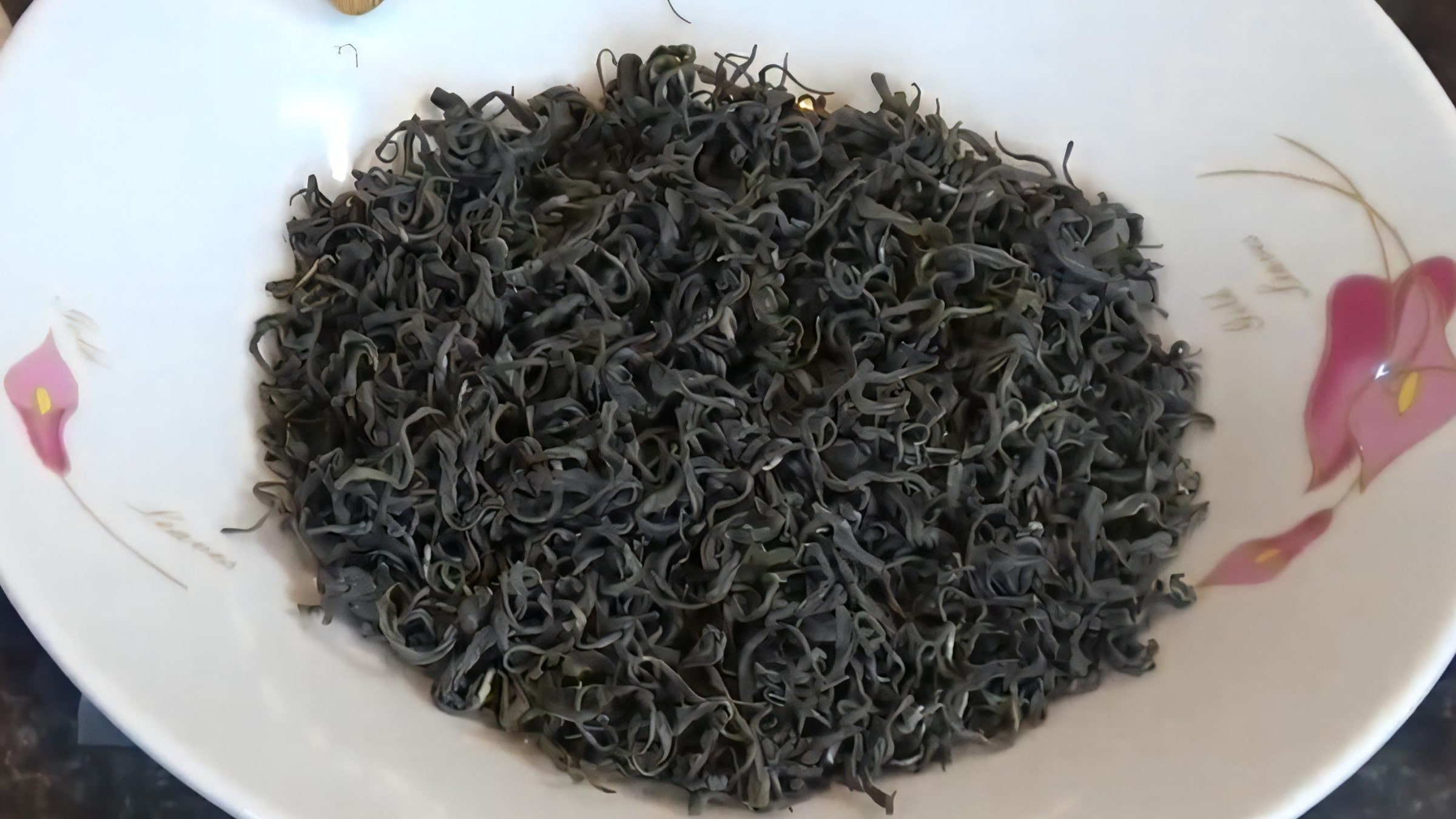
The visual characteristics of loose leaf green tea are quite distinctive, with signature dark, curled leaves that, when properly processed, display a deep green to blackish hue.
When brewed, green tea produces a liquor that ranges from pale yellow to yellow-green, and in some varieties, a light golden hue, depending on the cultivar and growing region. Teas from highland regions tend to produce a more intensely green liquor, while others may lean toward a yellow-green hue. The color should be clear and bright, never murky or dull.
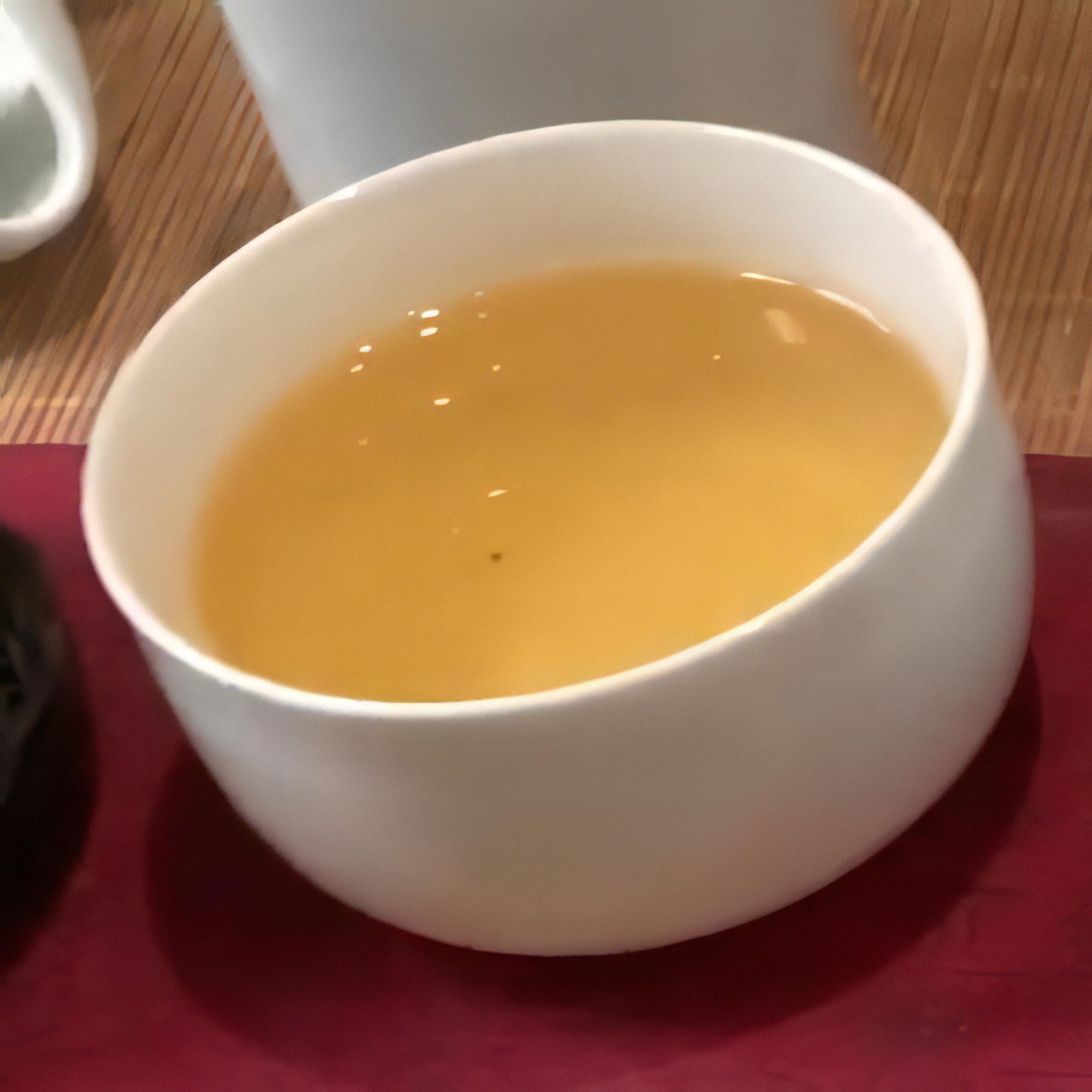
The aroma of green tea is one of its most appealing characteristics. Fresh green tea carries what can only be described as a “green rice” fragrance – reminiscent of fresh vegetation and the natural scent of tea gardens. This vegetal aroma is particularly pronounced in teas made from very young, tender buds and leaves.
On the palate, green tea offers a clean, refreshing taste that can range from mild to moderately astringent. The astringency shouldn’t be overwhelming but rather provides a pleasant, mouth-cleansing effect. High-quality green tea will have a sweet undertone that balances any astringency, creating a harmonious flavor profile that’s both invigorating and satisfying. It’s this foundation that makes green tea an excellent base for our famous West Lake lotus tea.
White Tea
White tea represents the pinnacle of tea processing minimalism. Made exclusively from tea buds, white tea undergoes the least processing of all tea types, allowing the natural character of the tea plant to shine through. This tea type is sometimes called “Bạch Kim” (Silver White) due to its distinctive appearance.
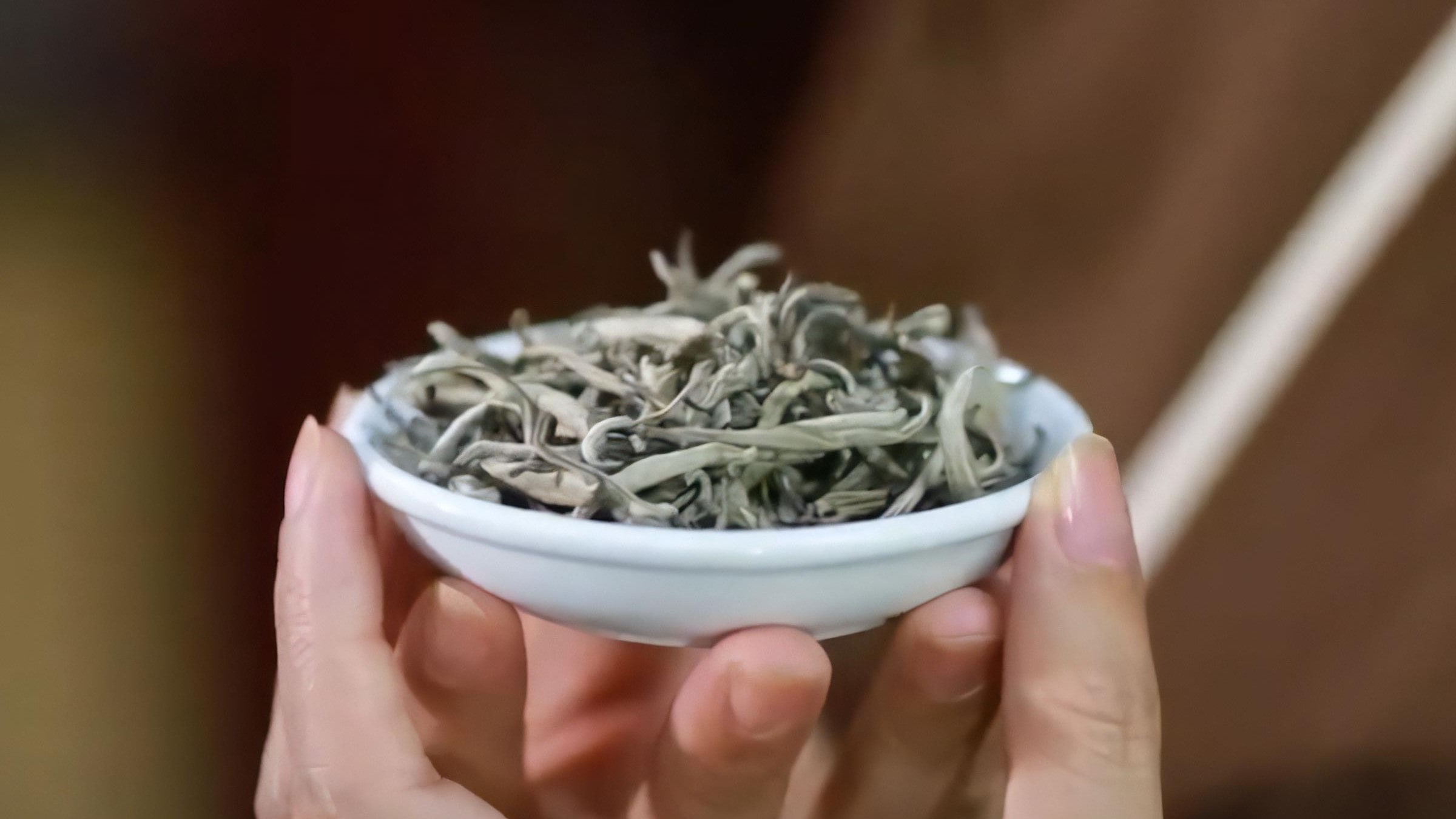
The visual appeal of white tea is immediately striking. The dried buds are covered in fine, silvery-white hairs that give the tea its name and appearance. These buds should be uniform in size and color, with a pristine, almost ethereal quality. The silver-white coating on the buds indicates proper processing and high quality.
When examining white tea, you’ll notice that only the topmost buds are used – no leaves are included in traditional white tea production. This selective harvesting contributes to white tea’s delicate nature and subtle flavor profile. The buds should appear plump and well-formed, showing no signs of damage or discoloration.
The brewing liquor of white tea is typically very pale, ranging from nearly colorless to a very light yellow. This pale appearance shouldn’t be mistaken for weakness – white tea’s subtlety is part of its charm. The liquor should be crystal clear, with no cloudiness or sediment.
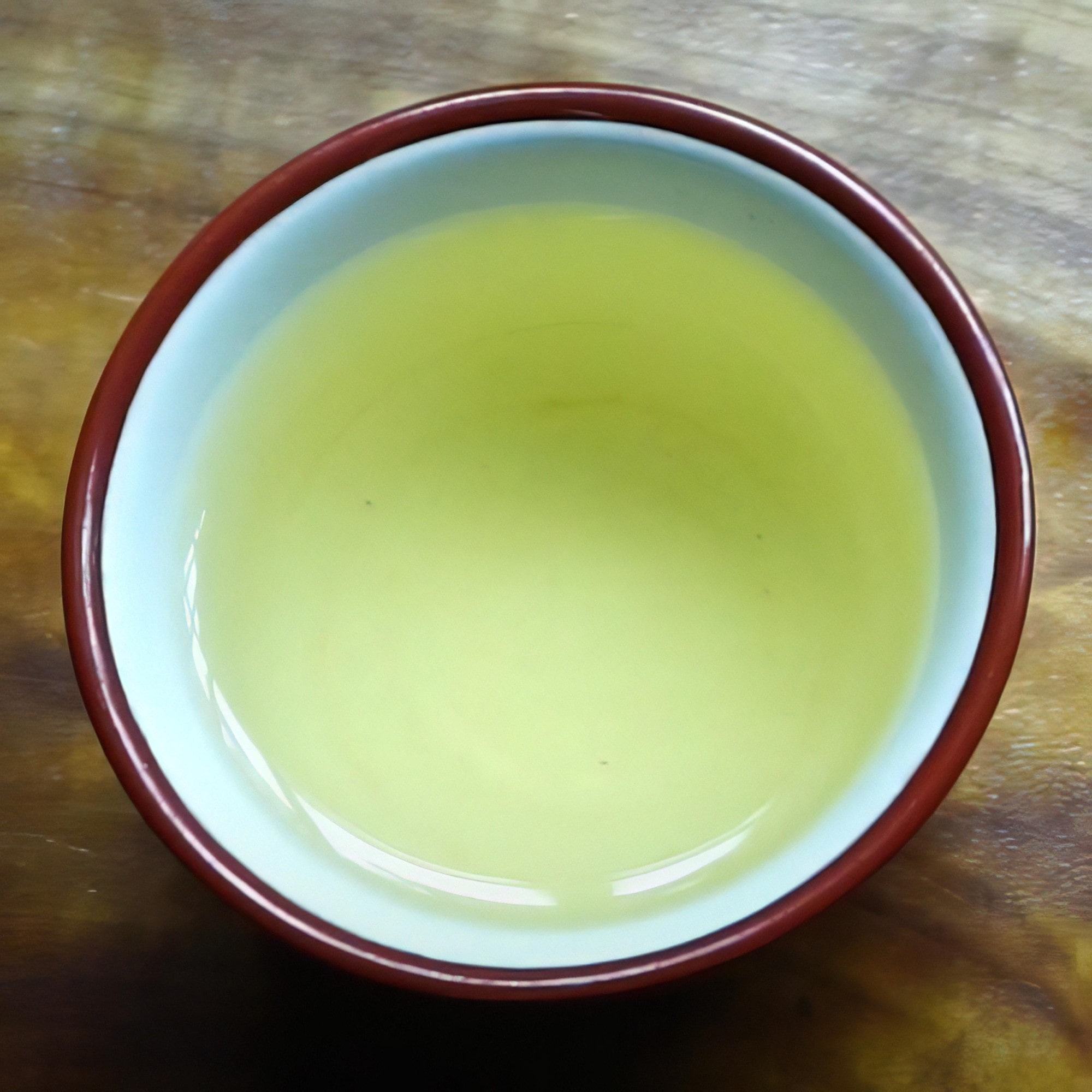
White tea’s aroma is gentle and refined, often described as having floral notes with hints of honey and ripe fruit. The fragrance is never overwhelming but rather whispers its presence, requiring attention and appreciation to fully experience. This subtle aromatic profile makes white tea perfect for quiet moments of contemplation.
The taste of white tea is characterized by its smoothness and natural sweetness. There’s minimal astringency, making it an excellent choice for those who find other teas too strong or bitter. The flavor is clean and pure, with subtle fruity undertones that develop as the tea cools. White tea offers what many describe as a “sweet aftertaste” that lingers pleasantly on the palate.
Yellow Tea
Yellow tea occupies a unique position in the tea world, representing a partially fermented tea that bridges the gap between green and more oxidized varieties. This tea type undergoes a special processing method that includes controlled fermentation, giving it distinctive characteristics that set it apart from its relatives.
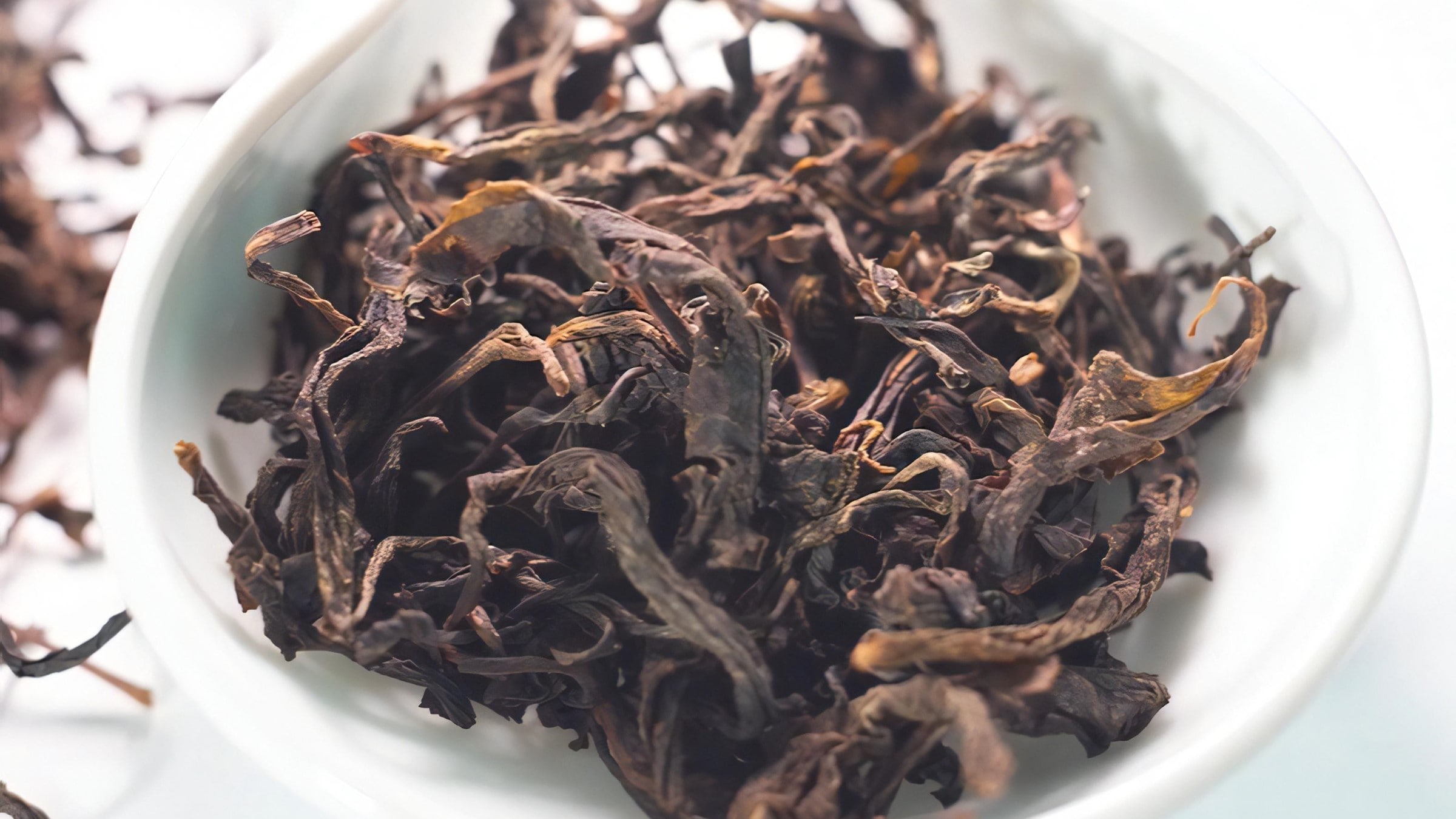
The processing of yellow tea involves a crucial step that distinguishes it from green tea: controlled fermentation over time. This process allows the tea to develop more complex flavors while maintaining some of the fresh characteristics of green tea. The fermentation is carefully managed to achieve the desired level of oxidation without going too far.
Visually, yellow tea leaves show signs of this controlled fermentation process. While they may still retain some green coloration, they begin to show golden or yellowish tints that indicate the oxidation process. The leaves should appear healthy and well-processed, without any signs of over-fermentation or damage.
One distinctive feature of yellow tea processing is the drying stage, which can be carried out either by gentle sun-drying or by applying heat, such as pan-firing or charcoal baking. Heat-drying can impart a smoky aroma and flavor that blend with the tea’s natural fragrance, as the smoke from burning wood adds an earthy dimension to its profile. In contrast, sun-drying gives the leaves a delicate, “sun-kissed” fragrance.
When brewed, yellow tea produces a golden-yellow liquor that’s more intense in color than white tea but lighter than fully fermented teas. The color should be clear and bright, with a golden hue that’s visually appealing and indicative of proper processing.
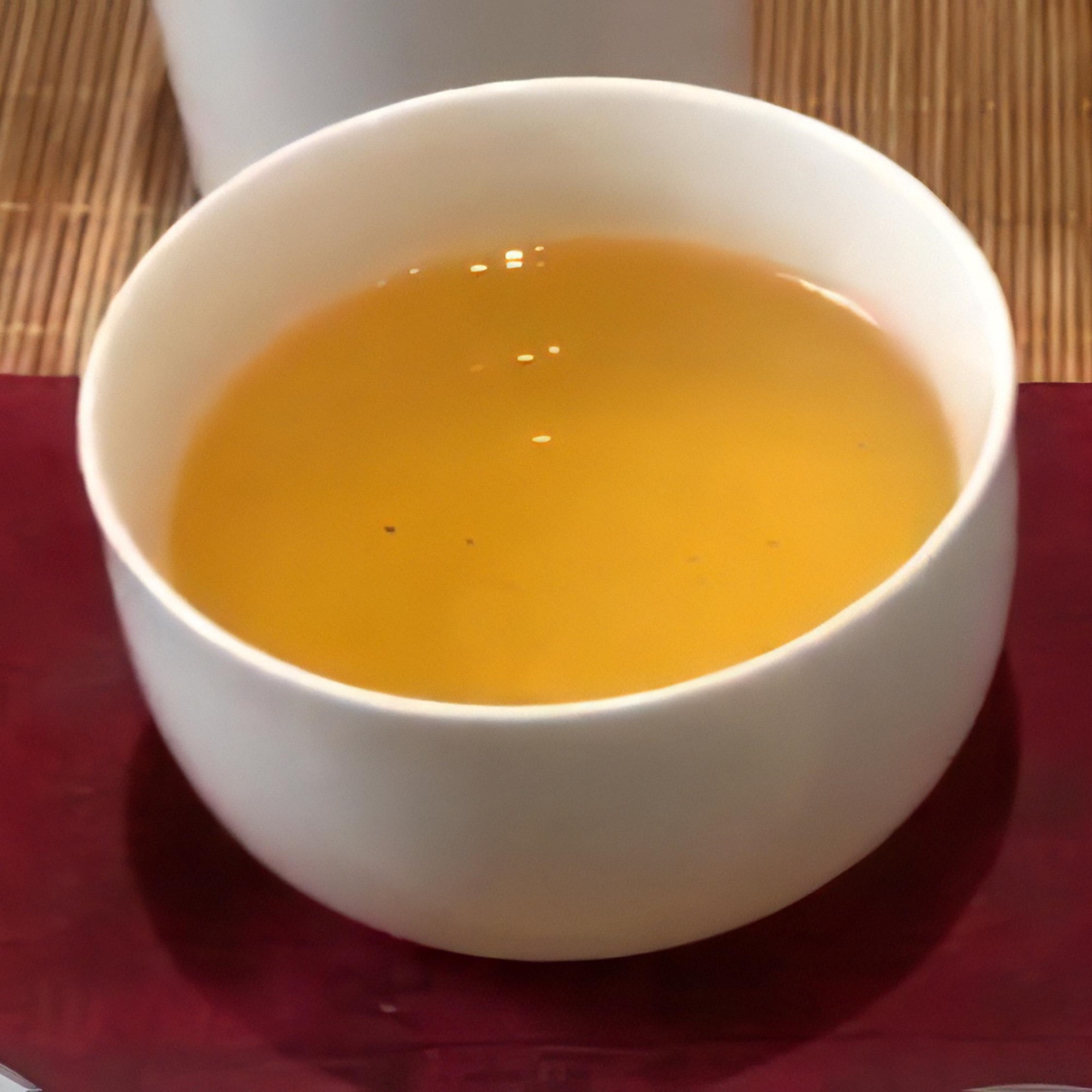
The flavor profile of yellow tea is more complex than green or white tea due to the partial fermentation process. It maintains some of the freshness of green tea while developing deeper, more nuanced flavors. The taste is generally smooth and mellow, with less astringency than green tea but more body than white tea.
Oolong Tea
Oolong tea represents one of the most sophisticated achievements in tea processing, requiring skill and experience to produce properly. This semi-fermented tea category encompasses a wide range of flavors and characteristics, depending on the degree of fermentation and specific processing techniques used.
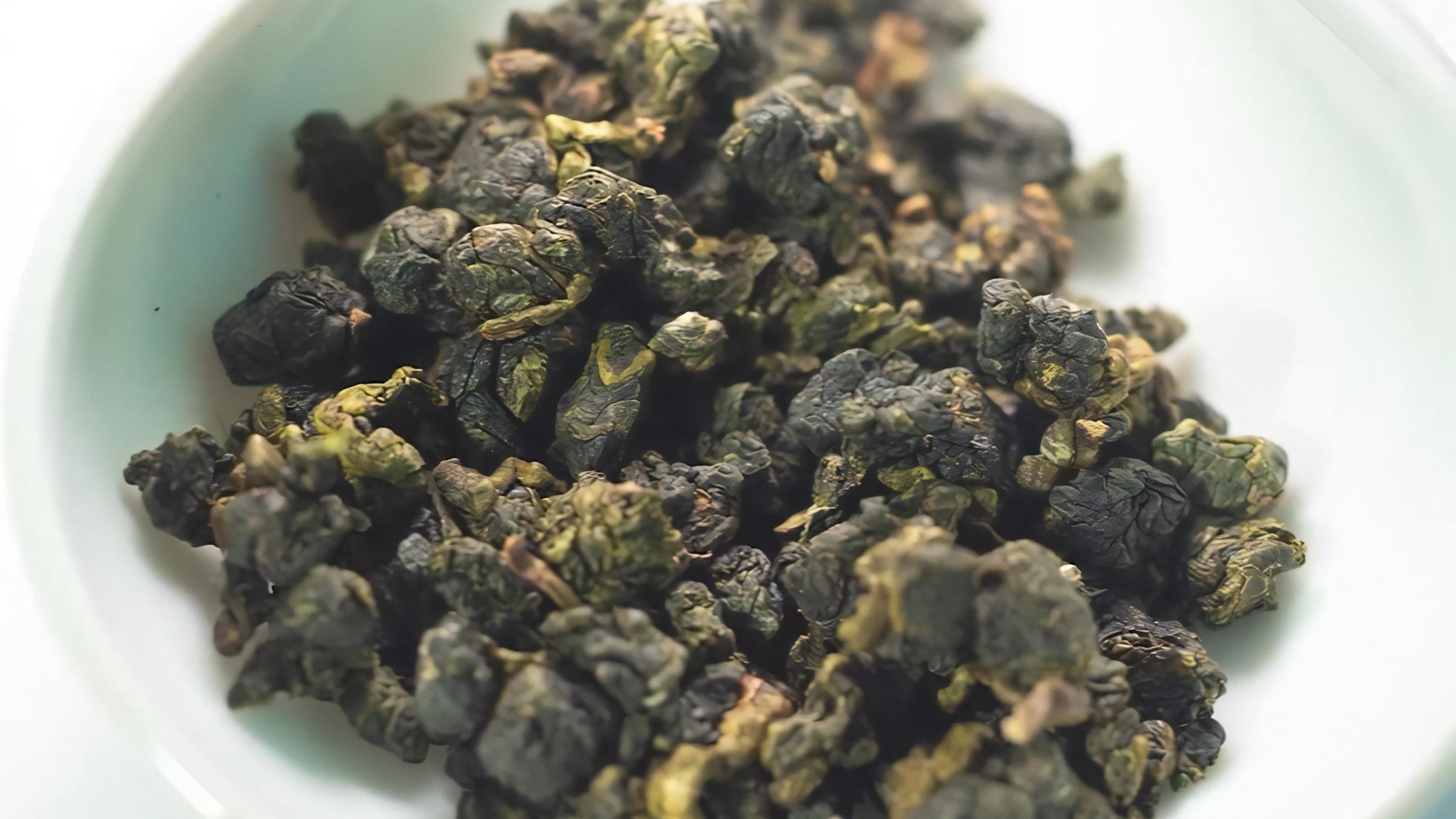
The production of oolong tea is a delicate balance between green and black tea processing methods. The leaves undergo partial fermentation, typically ranging from light to moderate oxidation levels. This controlled fermentation process requires precise timing and environmental conditions to achieve the desired flavor profile.
Oolong tea comes in various forms, but one of the most recognizable is the rolled or pellet form. These small, tightly rolled balls of tea leaves are created through a specific rolling and shaping process. When examining pellet-style oolong, look for uniform, well-formed pellets that feel dense and substantial. The pellets should be relatively uniform in size and shape, indicating careful processing.
The rolling process for oolong tea requires harvesting one bud with two to three leaves, depending on the desired final product. This selective picking ensures that the tea has the right balance of tender buds and more mature leaves, contributing to oolong’s complex flavor profile.
When brewed, oolong tea produces a liquor that can range from golden yellow to amber, depending on the level of fermentation. The color should be clear and bright, with good depth that indicates proper processing. The visual appeal of well-brewed oolong is part of the overall tea experience.
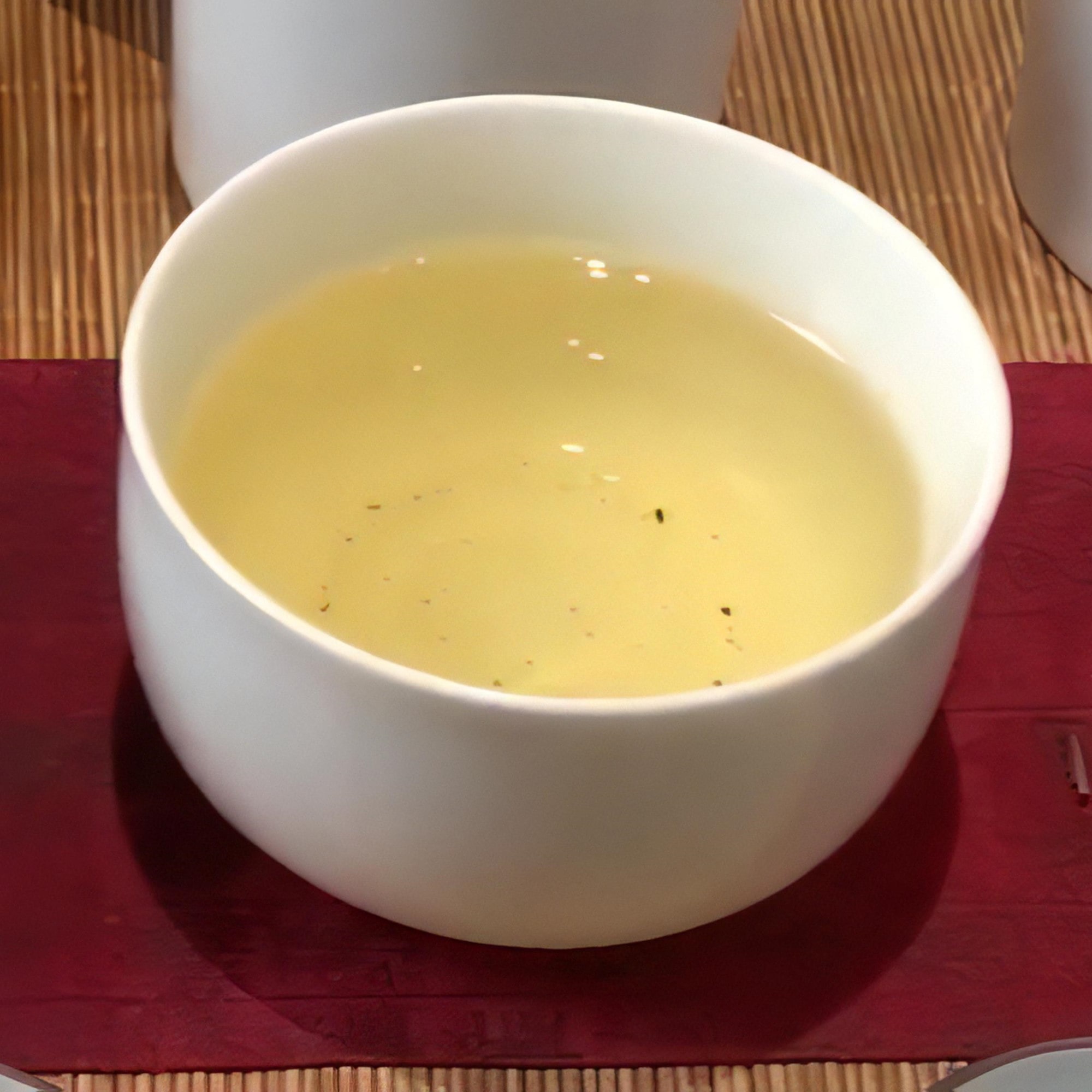
The aroma of oolong tea is notably complex and appealing. Properly processed oolong carries floral notes with hints of ripe fruit and natural sweetness. The fragrance should be inviting and well-balanced, without any off-notes that might indicate processing problems.
Oolong tea’s flavor profile is where this tea type truly shines. The partial fermentation creates a perfect balance between the freshness of green tea and the depth of more oxidized teas. The taste is typically smooth and mellow, with natural sweetness. Many oolong teas develop a pleasant “sweet aftertaste” that lingers after swallowing, enhancing the overall drinking experience.
Black Tea (Hong Cha or Red Tea)
What Western tea drinkers commonly call “black tea” is known as “hong cha” (red tea) in Chinese tradition, referring to the reddish color of the brewed liquor. This fully fermented tea represents the most oxidized category in traditional tea processing, resulting in robust flavors and distinctive characteristics.
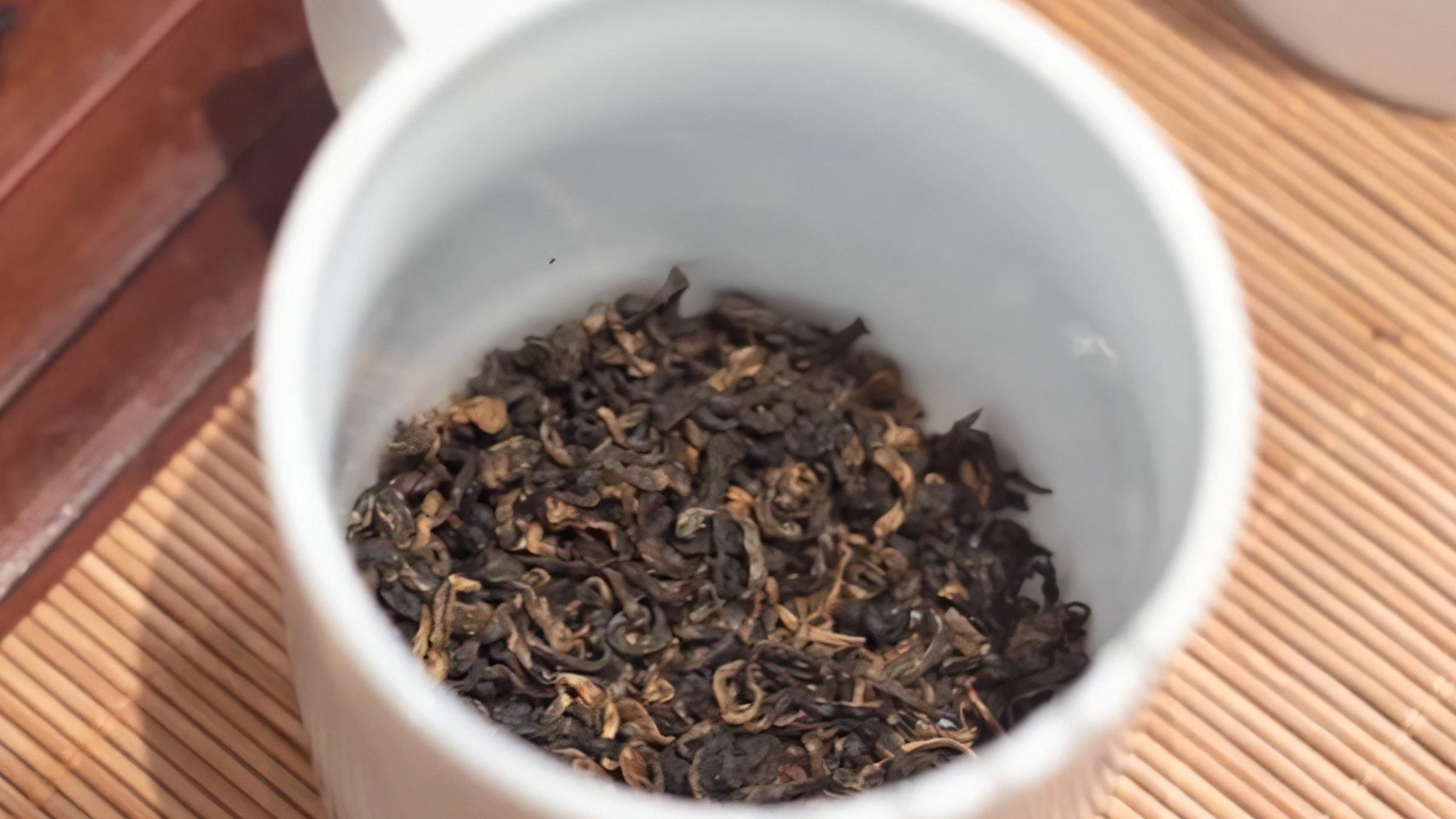
Black tea undergoes complete fermentation, typically reaching 60-70% oxidation levels. This extensive fermentation process fundamentally changes the tea’s chemical composition, creating the bold flavors and rich colors that make black tea so popular worldwide.
The visual characteristics of black tea leaves reflect this complete fermentation process. The dried leaves appear dark brown to nearly black, showing the effects of full oxidation. Well-processed black tea leaves should be uniform in color and free from any green tinges that might indicate incomplete fermentation.
When brewed, black tea produces a rich, amber to reddish-brown liquor that’s visually striking and inviting. The color should be clear, with good depth that indicates quality processing. The liquor’s color is one of the most reliable indicators of proper black tea production.
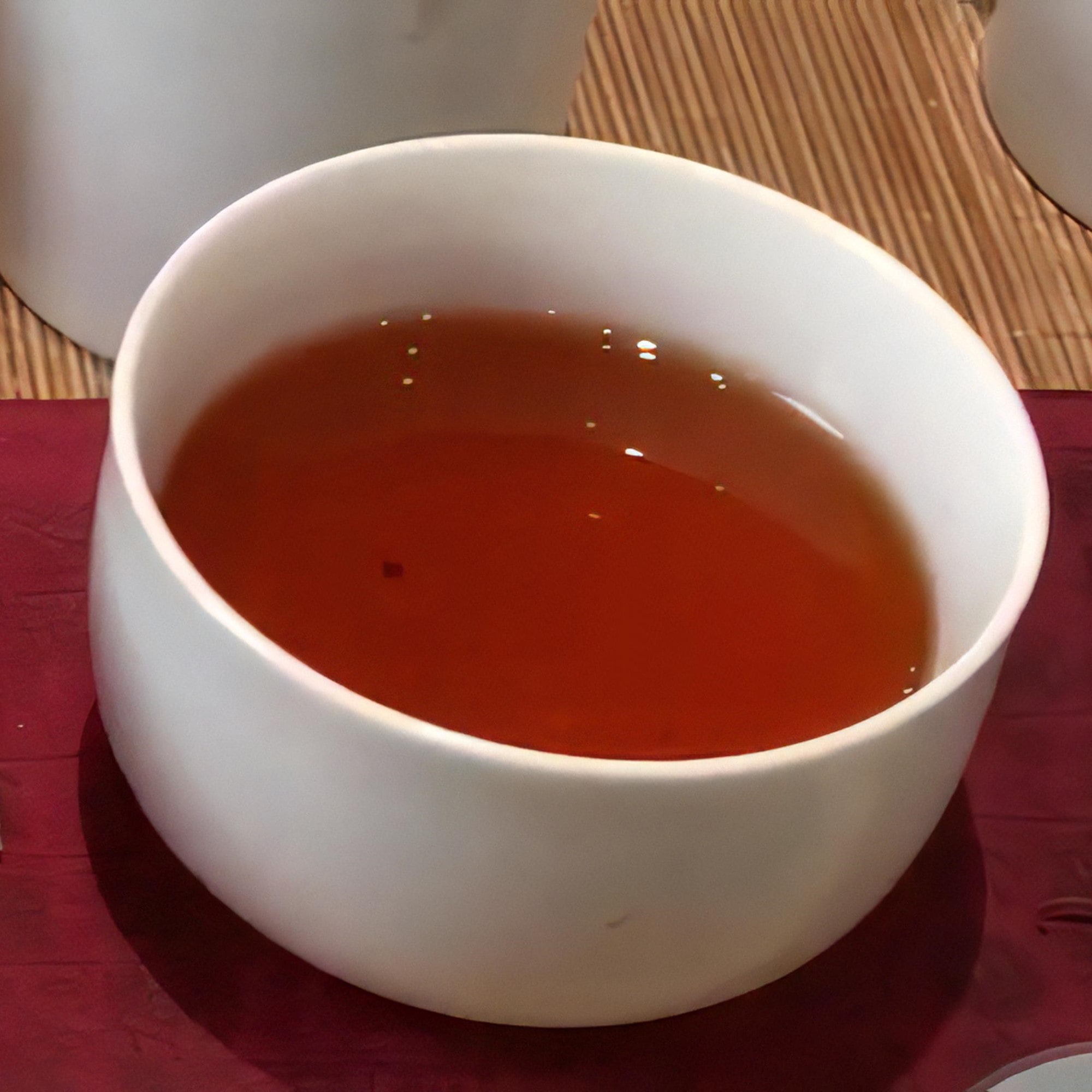
The aroma of black tea is robust and complex, featuring notes of ripe fruit, natural sweetness, and sometimes honey-like fragrances. The scent should be rich and inviting, drawing you in for that first sip. Quality black tea will have a well-rounded aromatic profile without any harsh or unpleasant notes.
Black tea’s flavor profile is characterized by its full body and satisfying depth. While it can have some astringency, this should be balanced by natural sweetness and complexity. The taste is robust enough to stand up to milk and sugar if desired, but quality black tea is equally enjoyable when consumed plain. The flavor develops layers as you drink, revealing different notes and characteristics with each sip.
Black tea is especially appreciated for its smooth, lingering sweetness without the harsh astringency. It delivers a rich, full-bodied flavor while remaining gentle and pleasant, making it a delightful choice for both daily enjoyment and for women who prefer a softer finish.
Pu-erh Tea
Pu-erh tea represents the pinnacle of aged tea complexity, created through either accelerated fermentation processes or natural aging over many years. This dark, fermented tea offers unique characteristics that set it apart from all other tea categories.
There are two main types of Pu-erh production: “ripe” (fermented) and “raw” (naturally aged). The ripe version undergoes an accelerated fermentation process where specific microorganisms are introduced to speed up the aging process, allowing the tea to develop complex flavors in a shorter time frame. Raw Pu-erh, on the other hand, ages naturally over many years, slowly developing its characteristic flavors through natural fermentation processes.
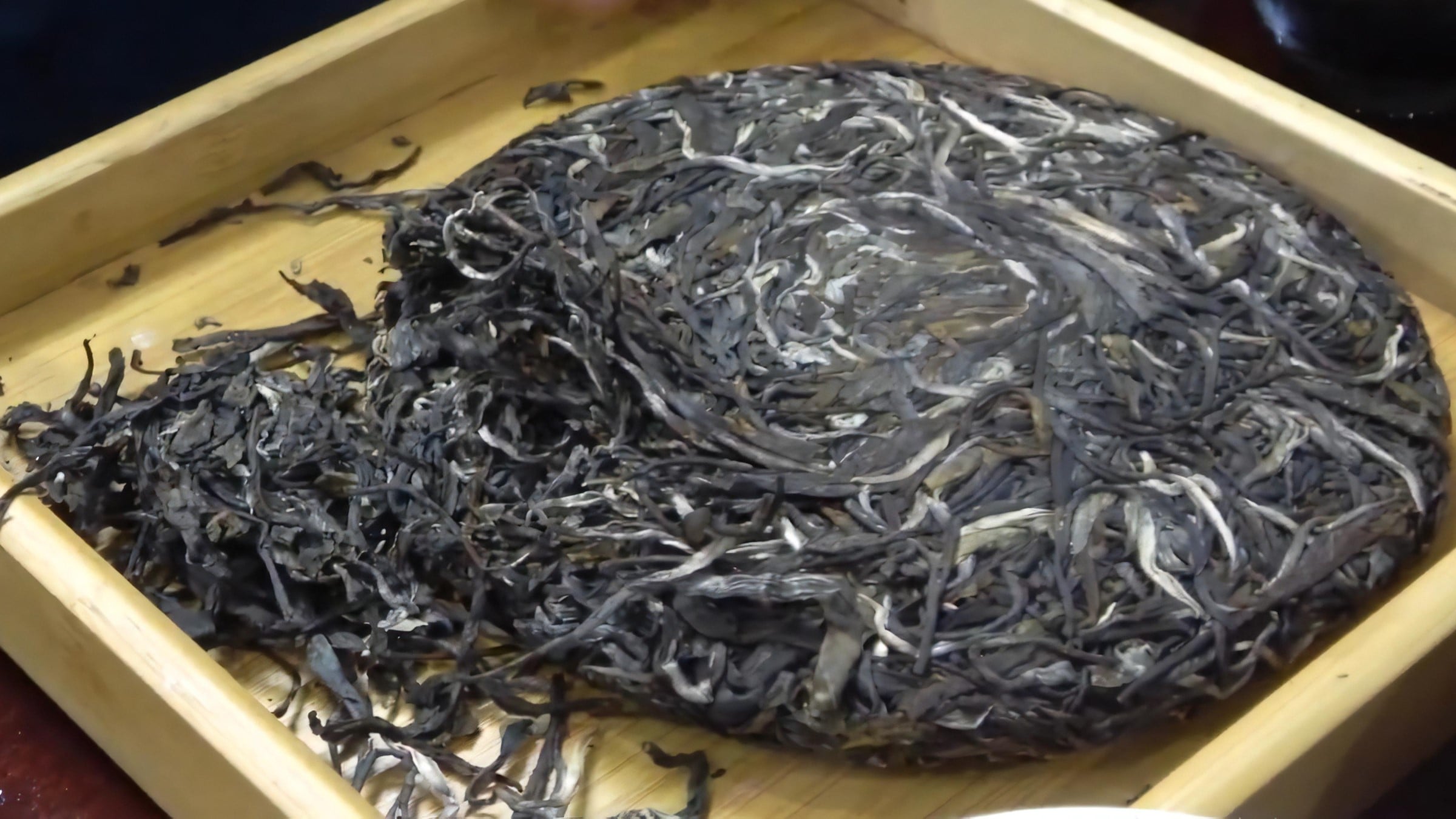
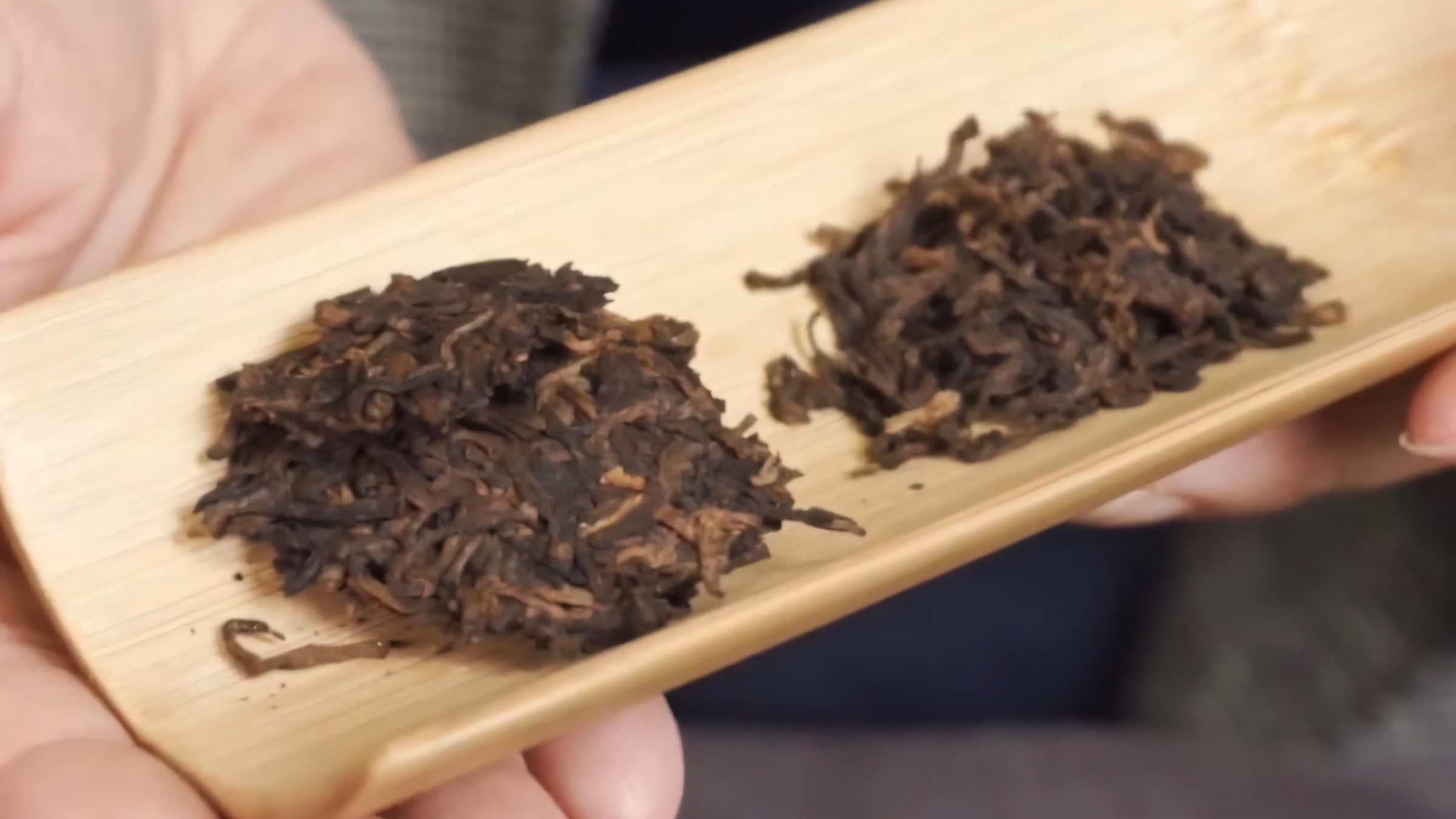
The transformation process that creates Pu-erh can begin with yellow tea that’s allowed to ferment further until it develops into this deeply aged variety. The extended fermentation fundamentally changes the tea’s chemical composition, creating entirely new flavor compounds and aromatic elements.
Visually, Pu-erh tea leaves appear very dark, ranging from dark brown to nearly black. The leaves often have a somewhat matte appearance, reflecting the deep fermentation they’ve undergone. Quality Pu-erh should have uniform coloration and no signs of unwanted mold or off-colors.
When brewed, Pu-erh produces a liquor that ranges from deep amber to dark brown, almost approaching black in the most aged varieties. The color should be rich and deep, with good clarity despite its intensity. The visual richness of Pu-erh tea liquor hints at the complex flavors waiting to be discovered.
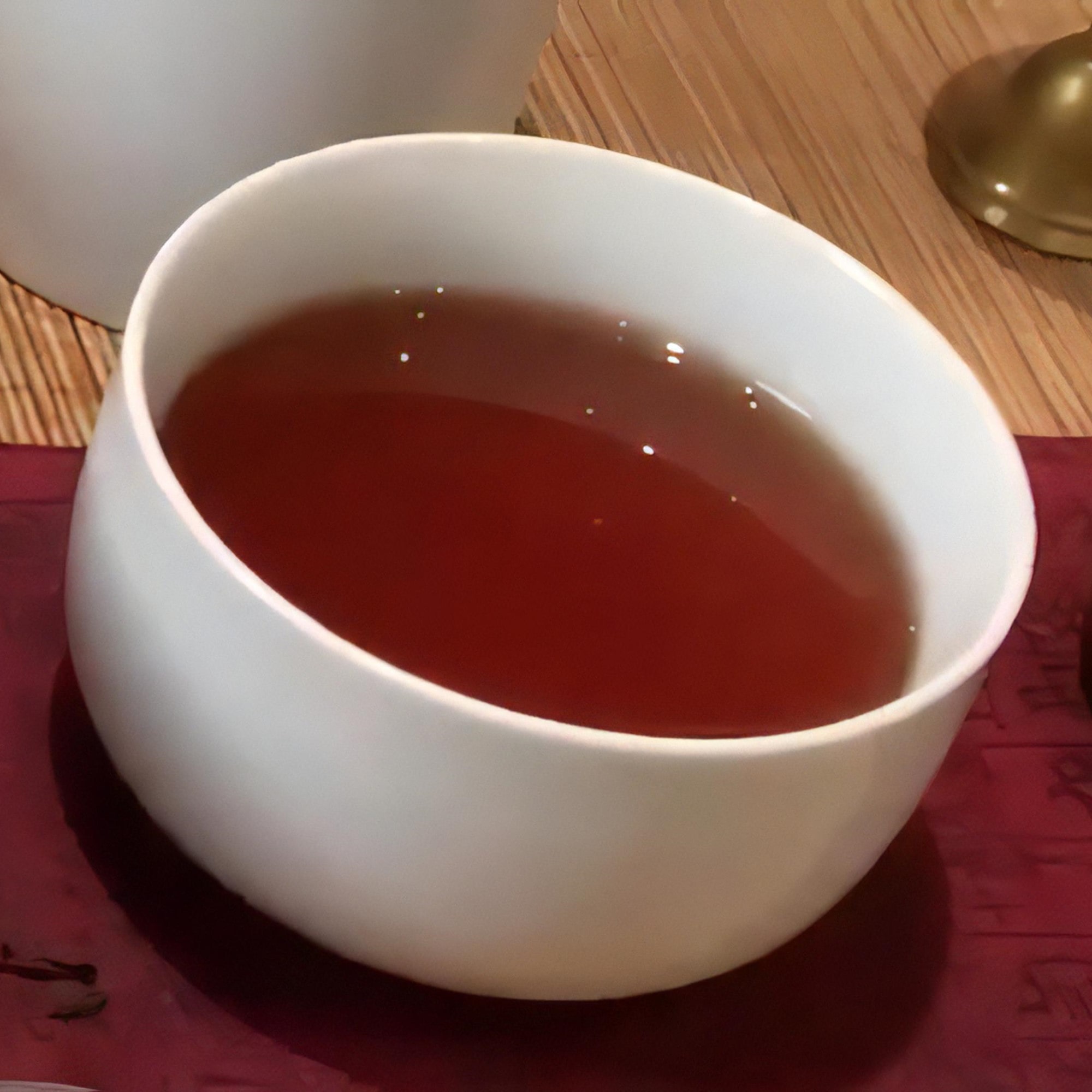
The aroma of Pu-erh is perhaps its most distinctive characteristic. Well-aged Pu-erh carries what’s often described as an “earthy” fragrance – not moldy or unpleasant, but reminiscent of rich forest soil after rain. This earthy aroma is completely different from the moldiness that indicates spoilage; it’s a clean, natural scent that speaks to the tea’s long aging process.
Pu-erh’s flavor profile is unlike any other tea. The taste is deep, smooth, and complex, with minimal astringency despite its dark appearance. Many describe Pu-erh as having a “sweet depth” – a natural sweetness that emerges from the complex fermentation processes. The tea is remarkably smooth and mellow, making it easy to drink despite its intensity.
One of Pu-erh’s notable characteristics is its beneficial effect on digestion. Many tea drinkers find that Pu-erh is particularly soothing after meals, making it an excellent choice for evening consumption.
Developing Your Tea Palate
Building expertise in tea differentiation takes time and practice, but the journey is rewarding and enjoyable. Start by focusing on one characteristic at a time – perhaps beginning with visual differences between tea types before moving on to aroma and taste distinctions.
Keep notes about the teas you try, recording your observations about appearance, aroma, and taste. Over time, you’ll begin to notice patterns and develop preferences based on a deeper understanding of what makes each tea unique.
Consider trying the same tea type from different regions or producers to understand how variables like growing conditions, processing techniques, and storage methods affect the final product. This comparative approach will sharpen your ability to distinguish subtle differences.
Don’t be discouraged if some characteristics seem subtle at first. Tea appreciation is a skill that develops over time, and what might seem like minor differences initially will become more apparent as your palate becomes more sensitive and trained.
Conclusion
The world of tea offers endless opportunities for discovery and enjoyment. Understanding the six main categories – green, white, yellow, oolong, black, and Pu-erh – provides a foundation for deeper tea appreciation and more informed purchasing decisions.
Each tea type represents centuries of tradition and refinement, from the minimal processing of white tea to the complex aging of Pu-erh. By learning to identify these different categories through sight, smell, and taste, you’re connecting with a rich cultural heritage that spans continents and generations.
Whether you’re drawn to the fresh vibrancy of green tea, the elegant subtlety of white tea, the mysterious complexity of yellow tea, the perfect balance of oolong, the robust character of black tea, or the aged wisdom of Pu-erh, each category offers its own rewards and pleasures.
Take time to explore, experiment, and enjoy the journey. With practice and patience, you’ll develop the skills to not only identify different tea types but also appreciate the craftsmanship and tradition that goes into every cup. The world of tea is vast and welcoming – there’s always something new to discover and enjoy.
Of course, once you’ve learned to identify and appreciate these wonderful teas, proper storage becomes essential to maintain their unique characteristics. To learn more about preserving your tea’s quality and flavor, check out our comprehensive guide on proper tea storage.
